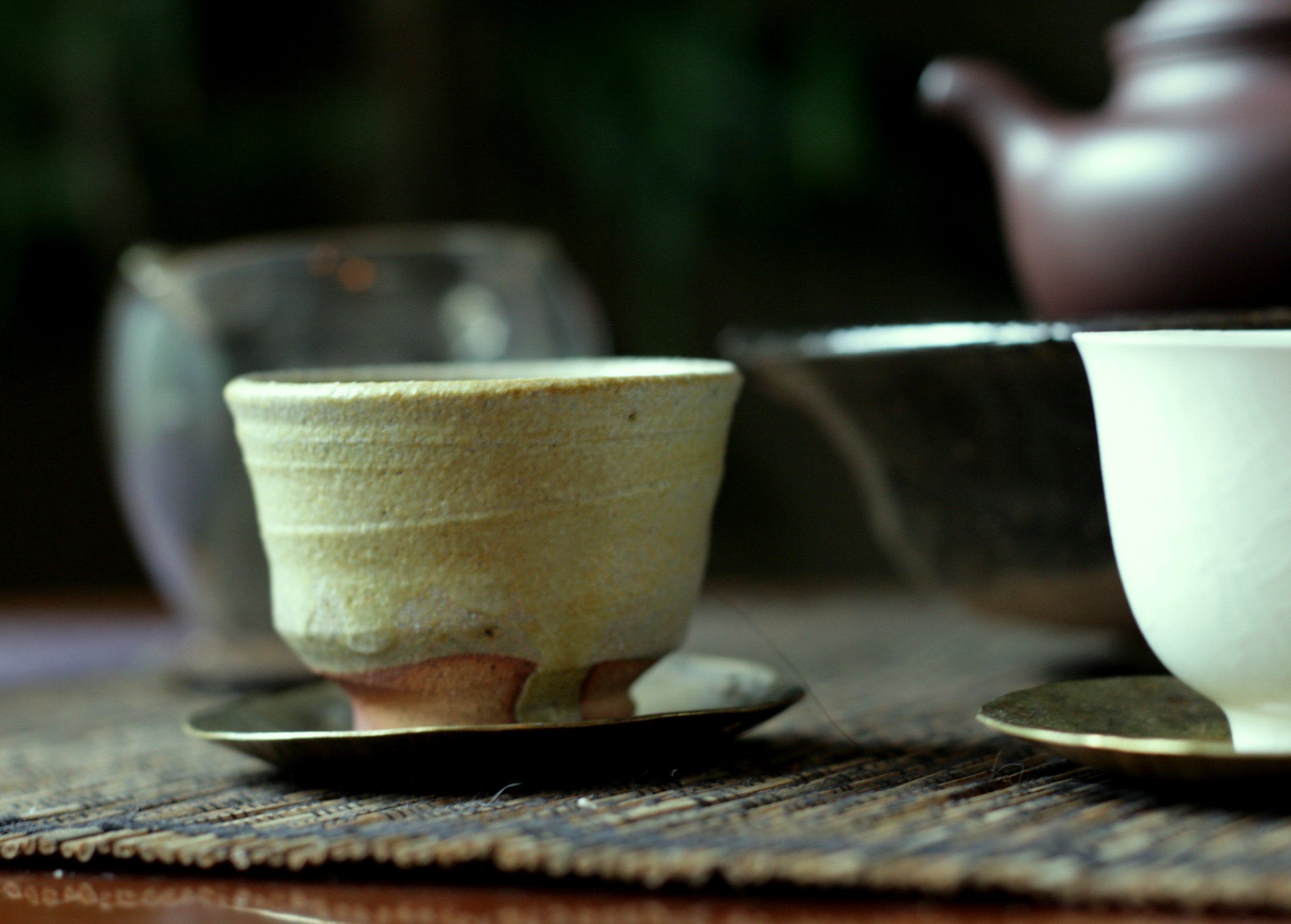 Image 1 of 11
Image 1 of 11

 Image 2 of 11
Image 2 of 11

 Image 3 of 11
Image 3 of 11

 Image 4 of 11
Image 4 of 11

 Image 5 of 11
Image 5 of 11

 Image 6 of 11
Image 6 of 11

 Image 7 of 11
Image 7 of 11

 Image 8 of 11
Image 8 of 11

 Image 9 of 11
Image 9 of 11

 Image 10 of 11
Image 10 of 11

 Image 11 of 11
Image 11 of 11












Iga yaki meoto yunomi with signed tomobako (74)
Iga yaki meoto yunomi with signed tomobako. 6.1cm x 4.1cm ea. Sold as pair.
Meoto yunomi – a pair of cups that represent “husband and wife.” This is a traditional gift given at weddings or to celebrate couples.
Tomobako – an “accompanying box” used for the storage of tea ware or other ceramic vessels. These boxes are signed by the artist and often come with kumihimo, or traditional ribbons, that are used to tie the box shut as well as a piece of fine rice paper that caps the box. The original box that comes with a ceramic vessel is considered a valuable part of the object purchased. For instance, a piece by a famous artisan that is missing the signed tomobako will be reduced by half in value compared to the same or similar piece that has retained the tomobako. These boxes are made of paulownia wood which is very light and contains a natural insecticide.
Iga yaki is a Japanese ceramics tradition found in Mie prefecture on the island of Honshu that is characterized by unglazed woodfired wares made of a high-heat resistant clay that is roughly formed in the wabi-sabi aesthetic. Pottery has been made in Iga since the 7th century, but like many ceramic traditions in Japan, it really came to popularity during the 16th and 17th century. Iga yaki was particularly known by tea enthusiasts for its production of vases and mizusashi (water containers) that were utilized by tea masters like Sen-no Rikyu. Iga yaki has always been associated with utilitarian needs and the cookware of Iga is well-renowned. The clay used in Iga yaki is sourced from around Lake Biwa. This clay is also sourced for use in Shigaraki yaki, with which Iga yaki is often associated.
Iga yaki meoto yunomi with signed tomobako. 6.1cm x 4.1cm ea. Sold as pair.
Meoto yunomi – a pair of cups that represent “husband and wife.” This is a traditional gift given at weddings or to celebrate couples.
Tomobako – an “accompanying box” used for the storage of tea ware or other ceramic vessels. These boxes are signed by the artist and often come with kumihimo, or traditional ribbons, that are used to tie the box shut as well as a piece of fine rice paper that caps the box. The original box that comes with a ceramic vessel is considered a valuable part of the object purchased. For instance, a piece by a famous artisan that is missing the signed tomobako will be reduced by half in value compared to the same or similar piece that has retained the tomobako. These boxes are made of paulownia wood which is very light and contains a natural insecticide.
Iga yaki is a Japanese ceramics tradition found in Mie prefecture on the island of Honshu that is characterized by unglazed woodfired wares made of a high-heat resistant clay that is roughly formed in the wabi-sabi aesthetic. Pottery has been made in Iga since the 7th century, but like many ceramic traditions in Japan, it really came to popularity during the 16th and 17th century. Iga yaki was particularly known by tea enthusiasts for its production of vases and mizusashi (water containers) that were utilized by tea masters like Sen-no Rikyu. Iga yaki has always been associated with utilitarian needs and the cookware of Iga is well-renowned. The clay used in Iga yaki is sourced from around Lake Biwa. This clay is also sourced for use in Shigaraki yaki, with which Iga yaki is often associated.